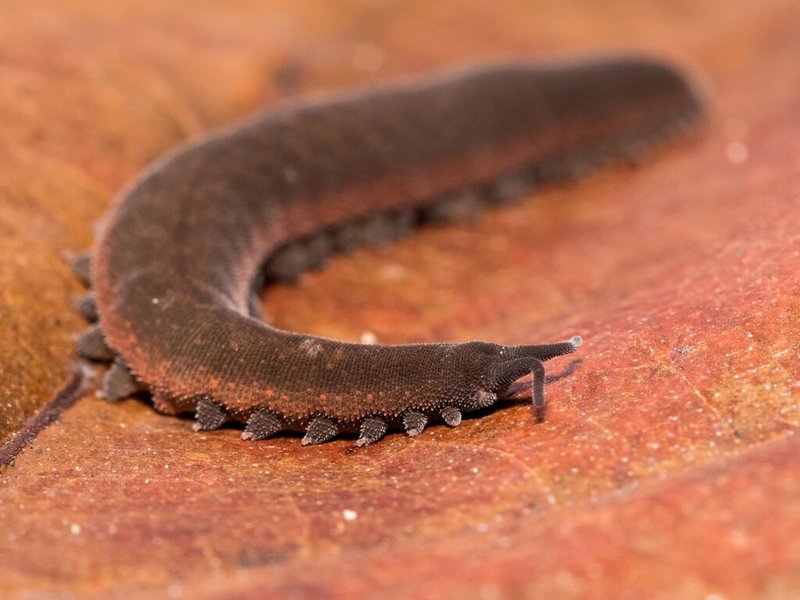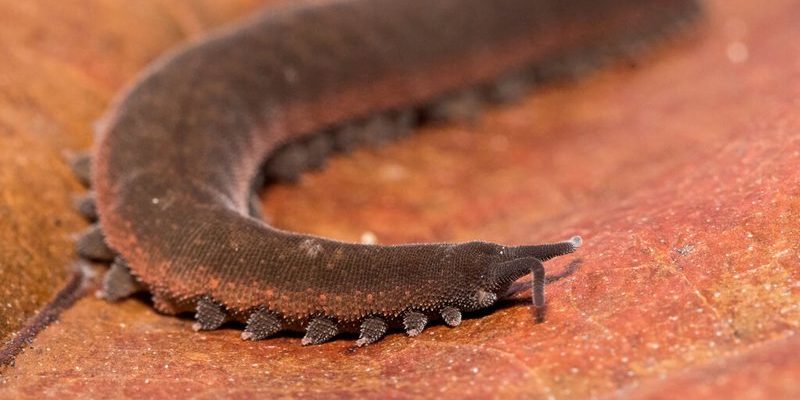
When we think about animal behavior, we often consider factors like mating, feeding, or hibernation. But velvet worms take it a step further, adapting not just to their environment but also to the rhythms of the seasons. Their behaviors morph with the shifting weather and temperature, making them a unique topic of study. So, what exactly do these little guys do throughout the year? Let’s dive in and explore their seasonal habits and why they matter.
What Are Velvet Worms?
If you’re picturing a tiny worm, you might be surprised to learn that velvet worms are actually more closely related to insects than to your garden-variety earthworm. They have a soft, velvety appearance, which is where they get their name. They can be found in humid tropical and subtropical regions around the world, usually hiding under leaves or in the damp soil.
These creatures are equipped with a unique set of features, including **unjointed limbs** and a **slimy coat** that helps them thrive in moist environments. They even have a fascinating hunting method! Velvet worms can shoot a sticky slime to catch their prey, usually small insects. It’s like they’ve got their own built-in web-shooter. Isn’t that cool?
Spring: The Season of Awakening
As spring rolls around, the weather warms up, and things start to come alive after the chill of winter. For velvet worms, this is a critical time. They emerge from their cozy hiding spots, often after a rainy spell that moistens the ground, which they thrive in.
During spring, velvet worms enter their reproductive phase. This is when you’ll notice a lot of activity. Males often engage in courtship rituals, which may involve dancing or other displays to attract a mate. Think of it like a wildlife dating show — the males really want to stand out! Successful males will mate with females, leading to the next generation of these fascinating creatures.
You might be wondering how the change in temperature affects them. Well, warmer weather promotes increased movement and hunting. With more insects available as food, the velvet worms ramp up their hunting game, taking advantage of the abundance.
Summer: Growth and Active Hunting
As summer heats up, velvet worms continue their active lifestyle. The longer days and stable temperatures create the perfect environment for growth. During this time, they often go through a molting process, shedding their skin to grow larger. This can be a vulnerable time for them, as they may need to find shelter while they transition.
Summer is also peak hunting season for velvet worms. With a plethora of insects around, they’ve got a buffet at their disposal. They hunt primarily in the early morning or late afternoon when humidity levels are higher and temperatures are a bit cooler. This way, they conserve moisture, which is essential for their slimy skin.
You might think of this as their “power hour.” With the right humidity, these worms can hunt most efficiently, ensuring a greater chance of feeding and thriving until the next season.
Autumn: Preparing for Change
As the days shorten and temperatures start to drop in autumn, velvet worms begin to prepare for the changing conditions. This transitional season sees a decrease in their activity levels, as they start to slow down.
One interesting behavior during this time is burrowing. Velvet worms tend to dig deeper into the ground or find safe spaces under rocks or fallen leaves. This helps them conserve moisture and shelter from the harsher conditions of winter. You might find them nestled in their burrows, waiting for the environment to stabilize before coming back out.
Despite the slowdown, autumn is also a time for them to finish their lifecycle. It’s common to see juvenile velvet worms appearing as they grow to maturity. This ensures that as winter approaches, there’s a new generation ready to face the coming challenges.
Winter: Survival in the Shadows
Winter can be quite harsh for many creatures, and velvet worms are no exception. With colder temperatures and fewer available prey, they enter a state of dormancy. This doesn’t mean they’re just sitting around; instead, they’re adapting to survive.
During winter, velvet worms often stay deep underground, where it’s warmer and more humid. They rely on the moisture in the soil to help them endure the dry and cold conditions. Their metabolism slows down, which helps them conserve energy while they wait for the warmth of spring to return.
You might imagine winter as a long nap for these creatures. They hold tightly to the moisture and warmth of their environment, ensuring they’ll be ready to awaken when spring brings the opportunities of a new year.
The Importance of Seasonal Behavior
Understanding the seasonal behavior of velvet worms isn’t just an academic exercise; it can offer insights into the health of their ecosystems. Their life cycles and behaviors can indicate changes in climate and habitat conditions. For instance, if velvet worms are emerging earlier in spring, it might suggest temperature shifts that could affect their survival and that of other species.
Moreover, they play an essential role in the ecosystem as both predators and prey. By studying their behaviors, scientists can learn more about biodiversity and how to protect these unique creatures and their habitats.
In a broader sense, observing these tiny beings can even teach us about resilience. To adapt and thrive through the changing seasons, velvet worms embody the beauty of nature’s cycles.
Velvet worms remind us that life is a series of changes. Their seasonal behaviors show how important it is to adapt and respond to the environment. From their awakening in spring to their survival strategies in winter, these creatures are a captivating part of our natural world.
So, next time you wander through a forest, take a moment to appreciate the velvet worms and their hidden lives. They’re not just another bug; they’re a testament to the complexity and resilience of life on our planet. Understanding them can deepen our connection to nature and inspire us to protect these incredible ecosystems.

